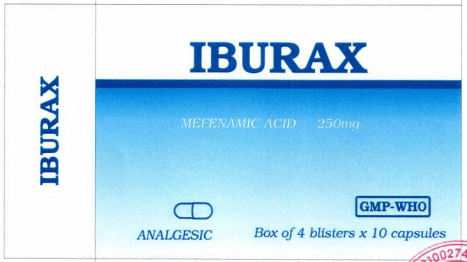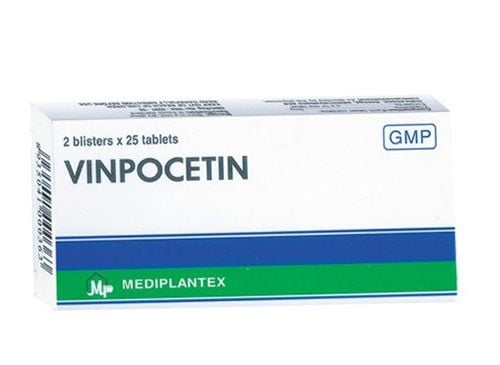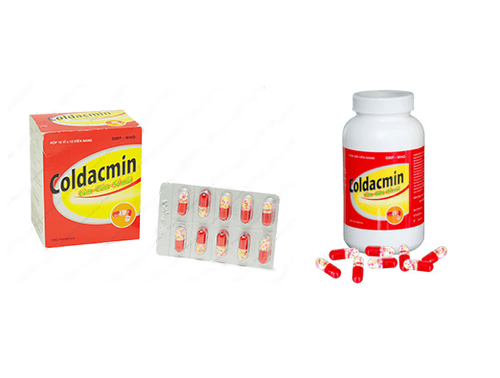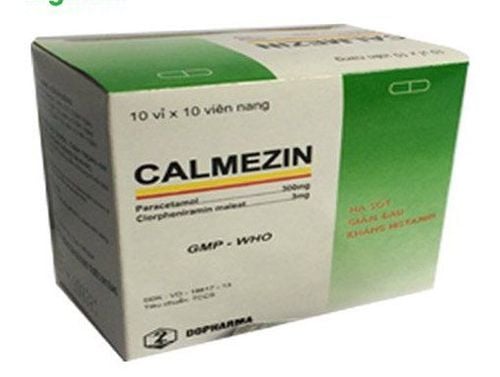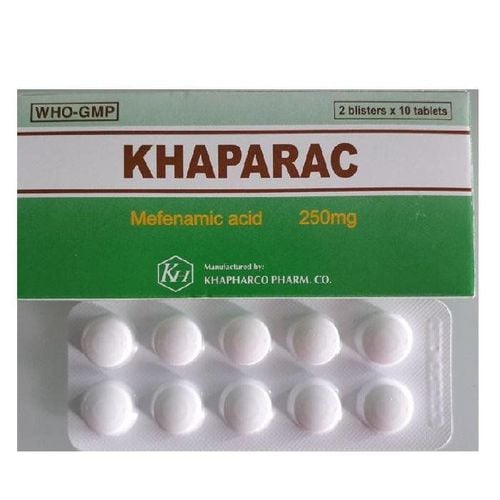This is an automatically translated article.
Phacoidant helps relieve pain effectively, used in cases of post-operative trauma and osteoarthritis pain. Phacoidrant is a prescription drug, which is taken as directed by a doctor.
1. What is the use of Phacoidant?
1.1. What is Phacoidant? Phacoidant belongs to the group of drugs for pain relief, antipyretic, non-steroid anti-inflammatory, treatment of gout and bone and joint diseases. The drug has the main ingredient is mefenamic acid, produced at Binh Thuan Pharmaceutical and Medical Supplies Joint Stock Company and registered by PHAPHARCO) - VIETNAM.
Phacoidant is made in tablet form and packed in box of 2 blisters x 10 tablets.
1.2. What is Phacoidant used for? Indications:
Mefenamic acid is indicated for the relief of body aches and mild to moderate nervous system pain such as: Headache, toothache, postpartum pain, migraine, traumatic pain and pain after surgery. Pain and fever follow inflammatory conditions such as menorrhagia, dysmenorrhea, and spasmodic or hypogastric pain.
Contraindicated to use Phacoidrant in the following cases:
The patient is sensitive to any ingredient in Mefenamic Acid. The patient had a severe allergic reaction such as severe rash, dizziness, hives and difficulty breathing. The patient has recently had or will have heart surgery. History of kidney disease, ulcers, or inflammation of the stomach or intestines. Children under 12 years old and pregnant women. People with a history of clotting and bleeding disorders.
2. Usage of Phacoidant
2.1. How to take Phacoidant The drug Phacoidant is taken orally. Patients should not take Phacoidrant medicine beyond the prescribed date. Phacoidrant should be taken with meals or as directed by your doctor and pharmacist. 2.2. Dosage of the drug Phacoidant Adults and children over 12 years old: 1 to 2 tablets each time, 3 times a day. Treatment when missed dose:
In case of missed dose of Phacoidant, it is advisable to supplement as soon as possible. However, if it is almost time for the next dose, skip the missed dose of Phacoidant and use a new dose. Treatment when overdose:
When using Phacoidant in overdose, the patient should stop the drug immediately and go to the nearest medical facility for timely treatment.
3. Notes when using Phacoidorant
Need to read the instructions for use carefully before taking Phacoidant. Phacoidrant should be used with caution in people with a history of peptic ulcers. Phacoidant must be taken with a full meal. Do not use Phacoidant in case of dengue fever and bleeding because of the hemorrhagic effect of Phacoidant. Phacoidant drugs are used during pregnancy, can cause bad effects such as miscarriage, fetal malformations, teratogens..., to any stage of pregnancy development, special attention should be paid. especially the first 3 months. Therefore, it is best not to use Phacoidant for pregnant women. General precautions during lactation: Phacoidant can be passed on to a baby through breast milk. It is best to limit or not use Phacoidrant during lactation.
4. Side effects of the drug Phacoidant
Like other non-steroidal anti-inflammatory drugs, Phacoidant has side effects such as: Diarrhea, nausea, vomiting, abdominal pain and dyspepsia, headache, rash, itching, dizziness, depression or decreased temporary white blood cell count, which can make asthma worse. In high doses, Phacoidant can lead to convulsions. Therefore, it should be avoided in case of epilepsy. If you experience these symptoms, the patient should stop using Phacoidant and notify the doctor for appropriate treatment.
5. Drug interactions Phacoidant
There are some drugs that can interact with mefenamic acid. Tell your doctor if you are taking any other medicines, especially: Anticoagulants (Warfarin), Corticosteroids (Prednisone), Aspirin, Heparin, or selective serotonin reuptake inhibitors (SSRIs) (Fluoxetine) because the risk of stomach bleeding may be increased. Probenecid, Magnesium hydroxide (antacids) because they may increase the risk of side effects from mefenamic acid. Lithium, Cyclosporine, Methotrexate, Sulfonylurea (glipizide) or quinolone (ciprofloxacin) because the risk of their side effects may be increased by mefenamic acid. Angiotensin-converting enzyme (ACE) inhibitors (enalapril) or diuretics (Hydrochlorothiazide, Furosemide) because their effects may be reduced by mefenamic acid To avoid interactions, before prescribing Phacoidant Patients should inform their doctor about any medications they are taking, including dietary supplements. The doctor will base on that to prescribe the appropriate Phacoidant.
6. How to store Phacoidrant
Preservation of Phacoidant drugs should be stored at a temperature not exceeding 30 degrees C. Patients should carefully read the instructions for storage of Phacoidant drugs listed on the package and instructions for use. Before taking Phacoidrant, the patient should check the expiry date of the medicine. When no longer using Phacoidrant, it should be collected and disposed of according to the instructions of the manufacturer or those in charge of the medical field. The above is all information about Phacoidant, patients need to carefully read the instructions for use, consult a doctor / pharmacist before using. Absolutely do not arbitrarily buy Phacoidrant treatment at home because there may be unwanted side effects.




